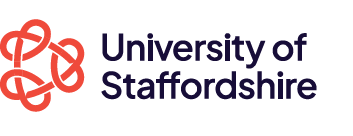Module Descriptors

SPORTS BIOMECHANICS AND INJURY
SPOR70780
Key Facts
Health, Education, Policing and Sciences
Level 7
15 credits
Contact
Leader: Roozbeh Naemi
Email: R.Naemi@staffs.ac.uk
Hours of Study
Scheduled Learning and Teaching Activities:
Independent Study Hours:
Total Learning Hours: 150
Assessment
- ASSIGNMENT 1800 - 2400 WORDS weighted at 60%
- CASE STUDY 1200 -1600 WORDS weighted at 40%
Module Details
INDICATIVE CONTENT
The primary aim of this module is to focus within a Sports Biomechanical framework on how the athlete and sports performer differ in their presenting pathology and management. The content of the module will cover the following areas, and will concentrate on Biomechanically related sports injuries and their management. Principles of Sports Biomechanics in relation to Injury Management, The Principles of Rehabilitation, Principles of Injury Prevention, Mechanisms of Injury. The role and practice of sports therapist, The role and practice of a sports physician. The Internal and External factors associated with Sports injury.
ASSESSMENT DETAILS
An ASSIGMENT length 1800-2400 words weighted at 60%. (LO's 1 & 2)
A Case Study (1200-1600 words) based on VIRTUAL CLINICAL PRACTICE weighted at 40%. (LO's 3 & 4)
The case study and assignment will require reflection on research for the module in application to a virtual clinical case study
All elements of assessment must be passed.
Additional Assessment Details (include formative feedback / assessment):
Module content will be delivered via 8 weekly activities with accompanying tasks delivered through blackboard .This provides opportunities for constructive feedback which will come from students involvement in informal and formal presentation. The virtual presentations via voicethread can either involve a group of students or individuals presenting their own case studies. Module staff also provide formative feedback through tutorials and blackboard discussion groups.
A Case Study (1200-1600 words) based on VIRTUAL CLINICAL PRACTICE weighted at 40%. (LO's 3 & 4)
The case study and assignment will require reflection on research for the module in application to a virtual clinical case study
All elements of assessment must be passed.
Additional Assessment Details (include formative feedback / assessment):
Module content will be delivered via 8 weekly activities with accompanying tasks delivered through blackboard .This provides opportunities for constructive feedback which will come from students involvement in informal and formal presentation. The virtual presentations via voicethread can either involve a group of students or individuals presenting their own case studies. Module staff also provide formative feedback through tutorials and blackboard discussion groups.
LEARNING STRATEGIES
The module is delivered fully on-line. Eight weekly activities with accompanying learning outcomes will be set up when students engage with a series of core and optional tasks supporting each activity. Core tasks will require active engagement of 6 - 8 hours per week and an important element of these tasks will be engagement with discussion based forums within blackboard to support the teaching / learning experience.
All pre course reading materials, course documentation and power point presentations delivered during the contact day will be available through blackboard.
Students are encouraged to participate in the discussion forums within Blackboard to enhance the teaching / learning experience.
4 hours Synchronous activity
56 hours Engagement with core module related tasks
25 hours Reading and research
40 hours Independent Learning
25 hours Assessment preparation
All pre course reading materials, course documentation and power point presentations delivered during the contact day will be available through blackboard.
Students are encouraged to participate in the discussion forums within Blackboard to enhance the teaching / learning experience.
4 hours Synchronous activity
56 hours Engagement with core module related tasks
25 hours Reading and research
40 hours Independent Learning
25 hours Assessment preparation
RESOURCES
In addition to standard library and IT facilities, the students in this module will require:
Anatomical models
Presentation tools - (computer facilities)
Clinical Facilities - couches, biomechanical measuring devices. Gait analysis equipment. Access to the biomechanics facility in the Science Centre OR virtual video software to enable video presentations to be viewed by distance learners.
Anatomical models
Presentation tools - (computer facilities)
Clinical Facilities - couches, biomechanical measuring devices. Gait analysis equipment. Access to the biomechanics facility in the Science Centre OR virtual video software to enable video presentations to be viewed by distance learners.
TEXTS
Core
Bartlett, R. Bussey, M (2012) Sports Biomechanics Reducing injury and improving Performance. 2nd Ed - London: Routledge.
Kjaer M, Magnusson P, Krogsgaard M, Engebretsen L, Roos H, Takala T, Woo S. (2003) Textbook of sports medicine: basic science and clinical aspects of sports injury and physical activity. Published by Blackwell Science,
Brukner P. Khan K.- Clinical Sports Medicine (2012) Mc CrawHill
MacAuley D. Oxford handbook of Sport and Exercises Medicine (Oxford Medical handbooks) (2012)
Bartlett, R. Bussey, M (2012) Sports Biomechanics Reducing injury and improving Performance. 2nd Ed - London: Routledge.
Kjaer M, Magnusson P, Krogsgaard M, Engebretsen L, Roos H, Takala T, Woo S. (2003) Textbook of sports medicine: basic science and clinical aspects of sports injury and physical activity. Published by Blackwell Science,
Brukner P. Khan K.- Clinical Sports Medicine (2012) Mc CrawHill
MacAuley D. Oxford handbook of Sport and Exercises Medicine (Oxford Medical handbooks) (2012)
Web Descriptor
The primary aim of this module is to focus within a Sports Biomechanical framework on how the athlete and sports performer differ in their presenting pathology and management. The content of the module will cover the following areas, and will concentrate on Biomechanically related sports injuries and their management. Principles of Sports Biomechanics in relation to Injury Management, The Principles of Rehabilitation, Principles of Injury Prevention, Mechanisms of Injury. The role and practice of sports therapist, The role and practice of a sports physician. The Internal and External factors associated with Sports injury.